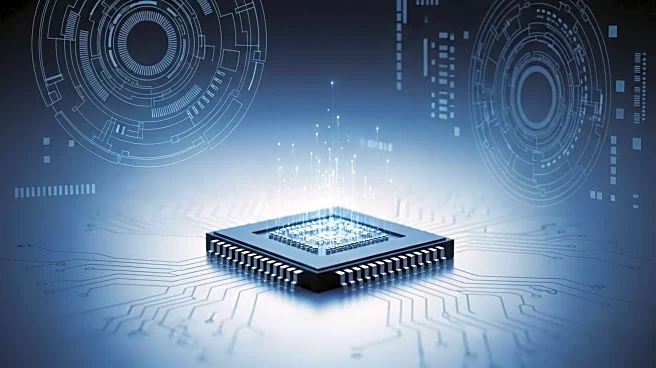What's Happening?
Researchers at the University of Michigan have developed a new nanoengineered optoexcitonic switch that significantly reduces energy loss in electronic devices. This innovative switch utilizes excitons, which are charge-neutral particles formed by an electron and a corresponding hole, instead of traditional electrons. The device features a tungsten diselenide monolayer on a tapered silicon dioxide nanoridge, achieving a 66% reduction in energy loss compared to conventional switches. The switch also surpasses an on-off ratio of 19 dB at room temperature, rivaling the best electronic switches available. The findings, published in ACS Nano, highlight the potential of excitons to improve efficiency in electronics by reducing thermal energy emission.
Why It's Important?
The development of this nanoengineered switch is significant for the electronics industry, as it addresses the persistent issue of energy loss due to heat in electronic devices. By harnessing excitons, the switch offers a more efficient alternative to traditional electron-based designs, potentially leading to cooler and more energy-efficient devices. This advancement could benefit manufacturers by reducing the need for cooling systems and extending the lifespan of electronic components. Additionally, the technology may pave the way for new applications in photonics, bridging the gap between electronic and optical devices, and enhancing the performance of consumer electronics.
What's Next?
The researchers' success in controlling exciton transport and directionality suggests further exploration into excitonic devices. Future developments may focus on optimizing the structural design to enhance exciton stability and transport efficiency. The technology could lead to the creation of next-generation devices that integrate electronic and photonic functionalities, offering improved performance and energy savings. Stakeholders in the electronics industry may consider investing in this technology to capitalize on its potential benefits, while researchers continue to refine the design for broader applications.
Beyond the Headlines
The breakthrough in exciton-based technology raises ethical and environmental considerations. As electronic devices become more efficient, the demand for raw materials may decrease, potentially reducing the environmental impact of electronics manufacturing. However, the shift to new materials like tungsten diselenide may require careful assessment of resource availability and sustainability. Additionally, the integration of photonics with electronics could lead to new ethical discussions around data transmission and privacy, as faster and more efficient devices become commonplace.










